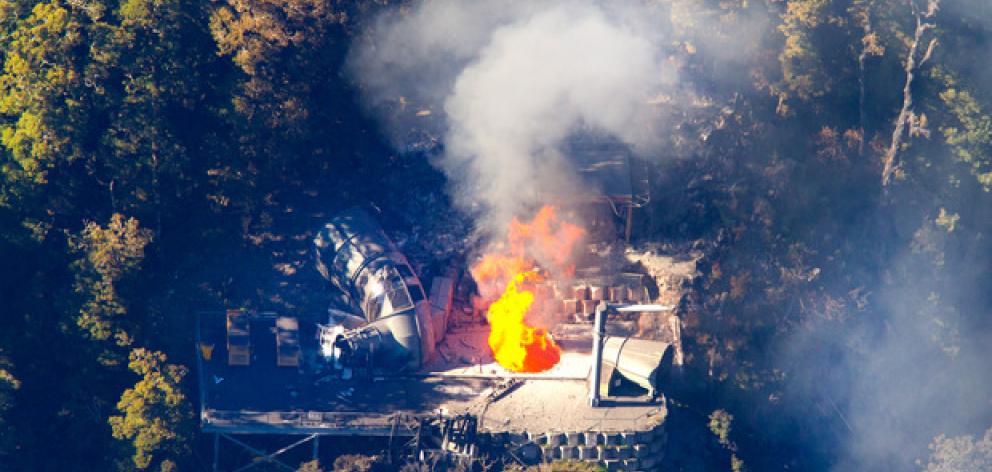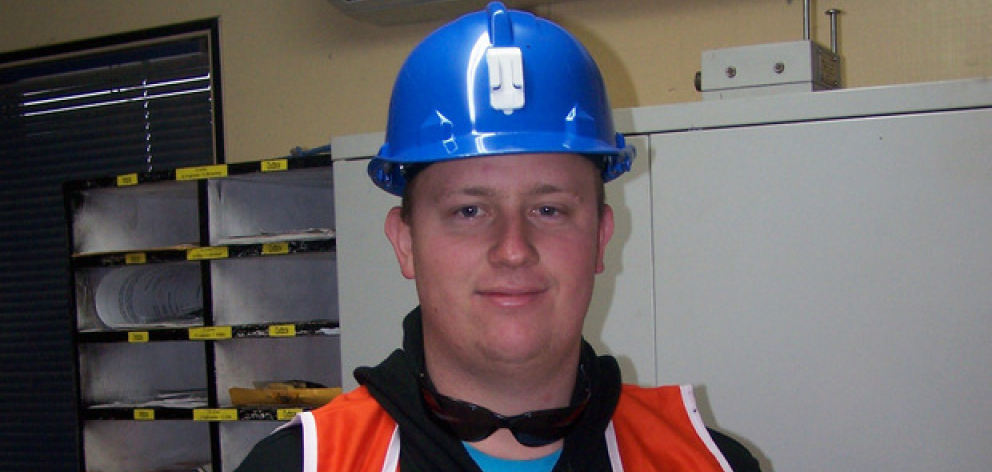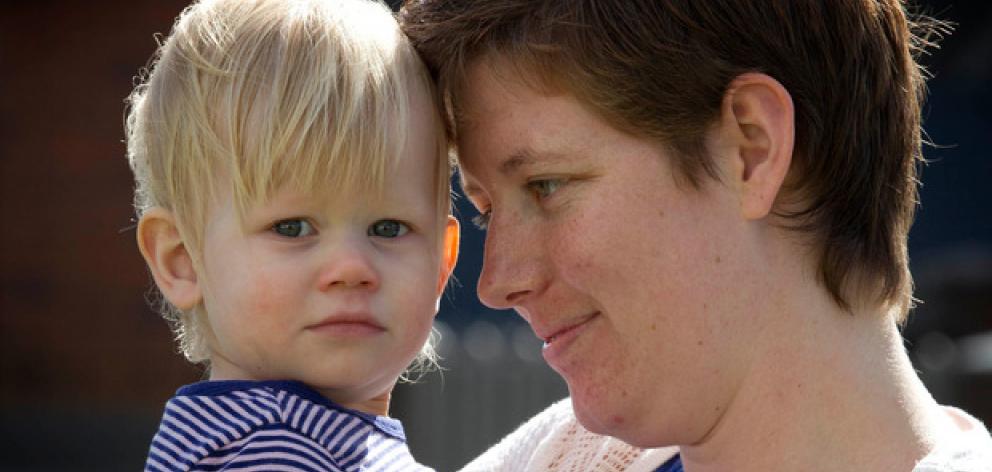
Five years ago today, 31 men hung their identification tags on a board outside the entrance to the Pike River coal mine and headed underground to work.
The day would end in tragedy. Only two men would come out of the mine alive.
Five years on, their workmates remain entombed 1500m beneath the Papamoa Ranges.
• Pike recovery too risky, says PM
As the men worked, methane gas accumulated around them. When that gas ignited at 3.45pm, an explosion rocked the mine.
It is still not clear what caused the ignition; it could have been arcing in the mine electrical system, a diesel engine overheating, contraband taken into the mine, electric motors in the non-restricted part of the mine or frictional sparking caused by work activities.
The two men who survived the explosion, Daniel Rockhouse and Russell Smith, were working in an access tunnel closer to the entrance than their colleagues.
Mr Rockhouse, then 24, had just started his afternoon shift on a coal-cutting machine.
He had been at the coalface with the rest of his crew, including his younger brother Benjamin, but was heading out of the mine to refuel a vehicle when the explosion occurred.
"All of a sudden I heard what seemed to be a shotgun blast but much, much louder and more powerful," he would tell the Herald days later.
He described a flash of white light and force that blew him off his feet. He smashed his head against a wall, and as thick white smoke filled the tunnel, he thought his time was up.
Breathing in what he believed was deadly carbon monoxide gas, Mr Rockhouse started to run. The mine was "dead quiet" and he screamed for help. "But no one came. There was no one there."
The father of three with a baby on the way collapsed and lost consciousness. Miraculously, he came to and dragged himself to a compressed air-line, sucking in enough fresh air to carry on.
He got to a phone and called a workmate outside, who said, "It's okay mate, we are waiting for you. Hurry up."
He staggered 200m more and saw Mr Smith lying semiconscious on the ground.
"He was away with the fairies ... I said, 'Bugger this. I'm gonna get you out of here'."
Mr Rockhouse grabbed Mr Smith and began dragging him out of the mine. It took two agonising hours.
Emergency service and mines rescue crews worked around the clock for days, waiting for a "window of opportunity" where gas levels were safe enough to enter and bring the 29 workers to safety.
On November 24 at 2.37pm, it was all over. A second explosion rocked the mine and any hope for the Pike River 29, as they had become known, was extinguished.
A royal commission of inquiry found that "undoubtedly" there was a failure to control methane in the mine.
Attempts to recover the bodies were hampered by further explosions and extremely high levels of gas that made re-entering the mine impossible.
To add to the families' pain and frustration, at the end of 2010 the mine went out of business. It was eventually bought by Solid Energy, which set about a new re-entry and body-recovery operation.
Again, the mine was deemed too dangerous and attempts to bring the men home were abandoned.
A line was permanently drawn under recovery efforts recently, with the news that the mine will soon be handed over to the Department of Conservation, and the Paparoa National Park between Greymouth and Westport will also be expanded by nearly 4000ha to include the mass grave.
It has been five years of heartache and despair for the Pike River survivors and families, with few answers, little closure and hopes continually dashed.
But there is little doubt that the 29 men will be forever remembered by New Zealand.
Rachelle Foster was pregnant when her partner, Josh Ufer, 25, died at Pike River. Today, she reflects on that terrible day and her life since

I was 16 weeks pregnant when Pike happened.
I sometimes wish I could go back to the morning of the 19th and tell Josh that, yes, I would like him to take the day off work. It was the weirdest thing. I remember getting up with him while he got ready for work, which I didn't normally do. I wasn't feeling well and I asked him to stay home. He said he would but I asked if that meant he would miss out on pay that day and Josh said yes. So I said that he had better go and I'd see him in Hokitika for dinner.

I was in Hokitika when I got word of the explosion. Josh's workmate called me up to tell me but he had a bad throat infection and I couldn't understand a thing he was saying. I walked back into the conference I was helping with and laughed as I said, "I think he just said there was an explosion at Pike. He must be going batty." But one of the other helpers said some of the guys had to leave because they were called to Pike. I got in my car and headed towards Greymouth. I wasn't sure where I should go. Then I started receiving texts. The texts kept coming.
I lost about 6kg in the weeks that followed. I just couldn't eat. I couldn't sleep. I was having dreams about Josh and I was in total denial.
I wrote a diary about my thoughts and feelings post-Pike. It's hard to read, full of hatred, love and the feeling of being lost, my fear of being a single mum -- which I never was, as one of my best friends moved back from Australia just to help me. I will be forever grateful for that.
When Josh's baby girl Erika was born on May 21, 2011, she was beautiful. She was just so easy and it was all smooth sailing.
Erika is 4 now and she is one bright little cookie. I've never met anyone with a memory like hers. She is strong-willed, sensitive, just a complete crack-up. When you ask her what she wants to be when she grows up it's a firefighter and helicopter pilot.
A lot has changed in the past five years. I now have three beautiful children: Erika, Dusty (2) and Henry (six weeks). I got married over a year ago and my husband Chris and I own a home in Greymouth. We are looking forward to Christmas and Erika's looking forward to starting school next year.
Last night I watched the documentary The Women of Pike River and I cried. I'm not a big fan of tears and I spent most of the weeks after Pike trying to hide the pain, keeping my breakdowns for the shower. But the one thing about the doco that stuck out was the way Kath [Monk, mother of miner Michael Monk] described the town hall after the announcement of the second explosion.
I think that is the one thing that will stick with me for life - the noise in that hall. It felt like it was suddenly half the size and that there were people all over you.
I had to get out but I knew I couldn't go outside without being attacked by media so I sat up against the climbing wall. I'm not even sure why I was holding on to so much hope. I'd already been told by experienced miners that no one was coming out.
Timeline
November 19, 2010: Methane gas explodes in the mine at 3.45pm, trapping 29 men
November 24, 2010: A second, unsurvivable explosion hits at 2.37pm
November 29, 2010: A royal commission of inquiry into the disaster is announced
December 13, 2010: Pike River Coal is placed into receivership
November 2011: The Department of Labour lays charges relating to health and safety failures against Pike River Coal, its former CEO Peter Whittall and VLI Drilling
July 2012: VLI Drilling pleads guilty in the Greymouth District Court to three health and safety charges
July 2012: Pike River Coal is sold to Solid Energy
November 5, 2012: The Royal Commission into the Pike River Mine Tragedy makes its report and recommendations public
February 2013: Experts meet to discuss body retrieval and decide it can be done
October 2013: The Defence Force completes phase one of the mine re-entry plan
December 2013: Whittall's charges dropped due to a lack of evidence against him; Pike River offers voluntary payment to families of the workers
February 2014: Second phase of work to re-enter mine tunnel begins
September 2014: Two families of mine victims apply for a judicial review of the decision to drop charges
November 2014: Solid Energy decides not to re-enter the mine due to safety reasons
November 2015: The mine site is dismantled as the Department of Conservation waits to resume ownership
November 2015: Environment Minister Nick Smith announces a new 45km Great Walk to be created near the mine as a memorial to the 29 lost workers.
Pike River victims
Conrad Adams; Malcolm Campbell; Glen Cruse; Allan Dixon; Zen Drew; Christopher Duggan; Joseph Dunbar; John Hale; Daniel Herk; David Hoggart; Richard Holling; Andrew Hurren; Jacobus (Koos) Jonker; William Joynson; Riki Keane; Terry Kitchin; Samuel Mackie; Francis Marden; Michael Monk; Stuart Mudge; Kane Nieper; Peter O'Neill; Milton Osborne; Brendan Palmer; Benjamin Rockhouse; Peter Rodger; Blair Sims; Joshua Ufer; Keith Valli.
- by Anna Leask












